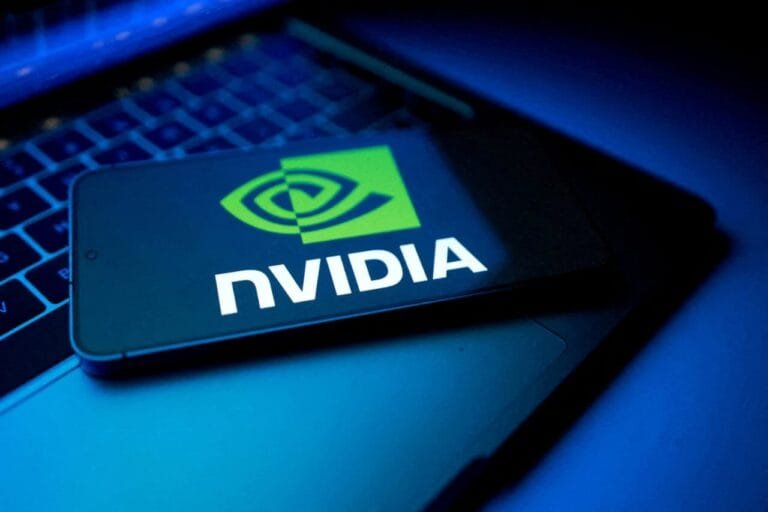
Intel revamps its foundry strategy with AI and 14A process under new CEO Lip-Boo Tan.
Intel Semiconductor, a veteran player in the industry, is undergoing a significant transformation under the leadership of its new CEO Lip-Boo Tan. And major changes are expected in the company’s chip manufacturing business. The aim of which is to bring Intel back to its old glorious position and make it a leader again in the competitive market. These changes are not limited to technological upgrades only. But it also includes organizational restructuring, workforce reduction and a renewed focus on AI (Artificial Intelligence). At the same time, new CEO Lip-Boo Tan has ushered in a new era. These Intel chip manufacturing changes could help attract customers like Nvidia and Apple
Lip-Boo Tan took over as Intel’s CEO in March 2025 and has set an ambitious agenda for the company as soon as he arrived. His appointment comes at a time when Intel is facing many challenges. These include lagging in chip manufacturing, losing market share and financial pressure. Tan’s deep experience, particularly in venture capital and as the former CEO of Cadence Design Systems, makes him a perfect choice for this challenging task. Tan’s main goal is to revive Intel as a world-class foundry. This means that the company will not only produce its own chips but also make chips for other companies like TSMC (Taiwan Semiconductor Manufacturing Company). His predecessor Pat Gelsinger also tried to turn Intel into a contract chip manufacturer but faced challenges in meeting customer expectations and providing technical service. Tan’s approach is to refine Gelsinger’s strategy and overcome those shortcomings.
Intel chip manufacturing strategy from 18A to 14A
Let’s talk about the biggest potential change in Intel’s chip manufacturing business regarding the marketing of its cutting-edge 18A process. Intel saw the process as its competitive edge, but Reuters reports that Tan is now questioning the commercial viability of 18A. And it’s possible that Intel may stop selling 18A to external customers and instead prioritize the development of the next-generation 14A process, which Tan sees as more competitive with TSMC’s leading technology.
If this shift happens, it will have several significant implications as well as billions of dollars of write-downs. Retreating from 18A could lead to billions of dollars of write-downs. Because Intel has invested heavily in its development. And existing commitments Intel will still use 18A for its own chips and existing customers like Amazon and Microsoft, with whom it has already signed agreements. The focus on 14A aims to attract big customers like Apple and Nvidia.Which currently rely on TSMC. Intel will need to improve its chip manufacturing process so that potential customers such as Nvidia and Google’s Alphabet can use it easily. Intel is hoping to work on ways to improve production efficiency as well as tan production or yield (the percentage of functional chips produced from each silicon wafer) as they mass-produce their first in-house chips using the 18A process this year.
Reviving Customer Trust in Intel’s Chip Manufacturing Busines
Tan intends to strengthen the foundry business and attract key customers. Intel Foundry will now be financially and operationally separate from the design business and will have its own operating board. This move aims to reassure potential customers that Intel remains a leader in chip design and is capable of manufacturing cutting-edge chips. Intel has already signed a multi-billion dollar deal with Amazon Web Services (AWS) to manufacture some of its chips for AI data centers. Intel’s latest 18A manufacturing process will be used. This is a significant move that raises new hopes for Intel’s foundry business. New focus on AI and product development AI is a key pillar of Intel’s new strategy. The company plans to resume development of chips that power AI servers and explore opportunities in areas such as software robotics and AI foundation models.
Tan aims to move to an annual release schedule of AI chips similar to Nvidia. That could take years, though. Intel’s upcoming Panther Lake chips, which will have AI features, are important to the company. Their success depends on the use of new technologies and technologies known as 18A in in-house factories. Intel’s financial success for 2025 is tied to strong sales of this chip. Organizational restructuring and workforce reductions Tan has updated Intel’s leadership team, bringing in new engineering talent. He has also worked on reducing the bloated and “slow-moving” middle management layer, which he sees as a cause of inefficiency. Intel’s workforce was to be reduced by about 15,000 employees by the end of 2024. And Tan plans further cuts to unnecessary jobs. He believes that reducing bureaucracy and focusing on engineering will boost innovation and speed up the decision-making process.
Challenges Ahead for Intel: Competing with TSMC and Global Uncertainty
The challenges facing Intel are serious. Competitors such as TSMC have established a strong foothold in advanced chip manufacturing. And Intel will need to constantly improve its production capabilities and customer service. Global supply chain challenges and geopolitical uncertainties could also impact Intel’s plans. And though Tan’s vision is clear, Intel must focus on its engineering excellence to accelerate innovation by creating a lean engineering-focused leadership team that can adapt quickly to market and technological changes. Intel has large design and engineering centers in India. And This change could increase research and development investment in India. Which could create employment opportunities and boost the local economy.
conclusion: Can Intel’s Manufacturing and AI Strategy Succeed?
Because Intel is on the verge of a major change under Lip-Boo Tan’s leadership. Potential changes in the chip manufacturing business, new focus on AI and organizational restructuring could help the company regain its position in the competitive semiconductor market. Because this is an ambitious plan that has many challenges but it is a necessary step for Intel if it wants to remain a major player in the future. The coming years will be crucial for Intel as the company executes this new strategy and strives to realize its dream of a world-class foundry.




